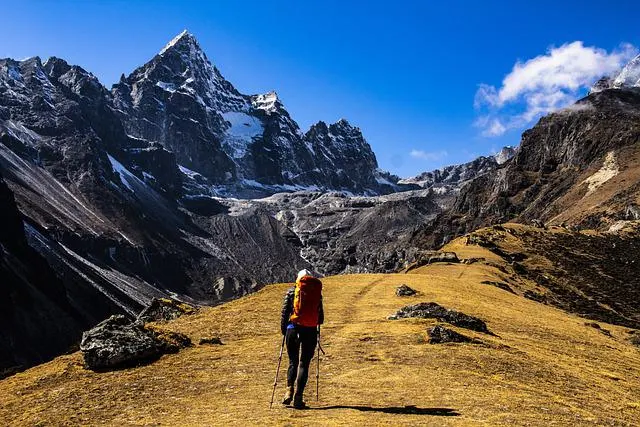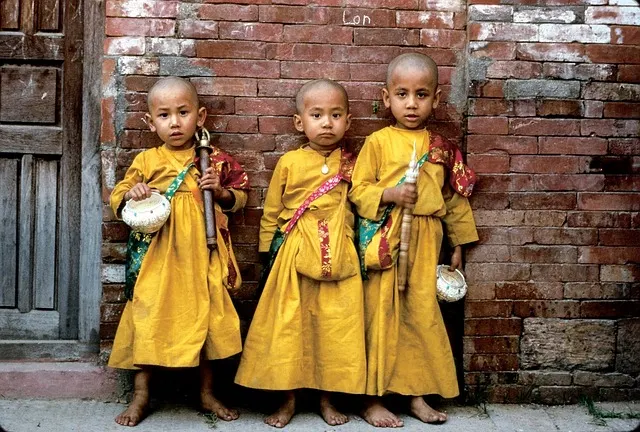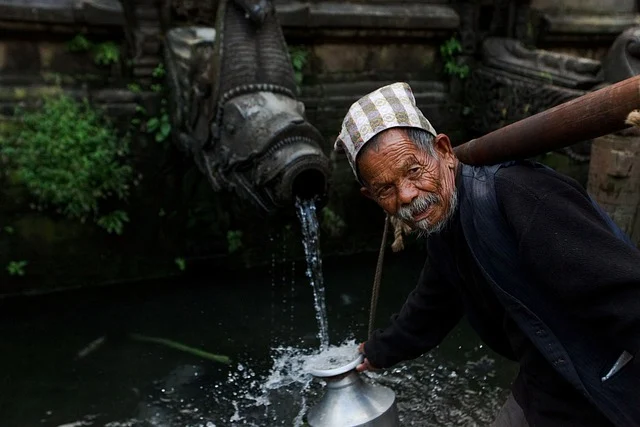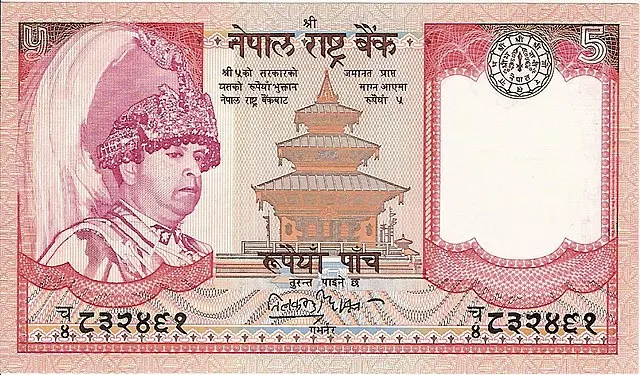Nepal for first time travelers
Your essential guide to the roof of the world
Due to its rich cultural heritage, an abundance of temples, and world-famous mountain peaks and treks, Nepal has become one of the most sought-after destinations for thrill-seekers around the world. If you’ve decided to become one of them and finally decided to book a trip to this exciting part of the world, you might want to check out this essential guide to get you started.
It contains all the essential information for your upcoming Nepal tour, including the best time to go, how to stay safe, as well as all the adrenalin-pumping adventures you can embark on once you touch the ground.
Getting a visa
Foreign nationals visiting Nepal can obtain a tourist visa on arrival — multiple entry visas are issued for 15, 30, and 90 days duration for visitors from most countries. The only exceptions are citizens of India, who are not required to have a visa in order to enter the country.
The application for a visa on arrival can be filled out online before the trip or at the border. Visa fees should be paid in US Dollars in cash at the border.
Getting along with the locals
Nepal is home to a number of different ethnic and religious groups, visitors are advised to observe local etiquette out of respect for the Nepalese people, who are generally friendly to foreigners.
When visiting sacred sites or homes, men are advised to wear long-sleeved shirts and trousers. Women are supposed to cover the knees, shoulders, and chest — so long skirts or loose-fitting trousers can be ideal to wear for these occasions. Moreover, make sure to remove your shoes when entering a temple or someone’s house.
When greeting each other, people tend to avoid physical contact. The right way to say hello is to press your hands in front of your chest and say “namaste” (nam-as-tay). Since Nepal is a fairly conservative country, you are advised not to indulge in public displays of affection with your significant other.
During meals, remember to use your right hand to eat and pass food to other people. The same goes for handling money: the right hand should be used to give and accept notes, while you can use your left hand to hold or support the right elbow as a sign of respect.
Health and Safety
Immunizations are not mandatory when visiting Nepal; however, there are still a few vaccines visitors are recommended to get prior to their departure. These include Hepatitis A, Typhoid, and Meningitis, as well as boosters for Tetanus, Polio, Mumps, and Measles.
The Nepalese diet might not be easy on the stomach for every traveler, so make sure to take probiotics to avoid contracting digestive issues, especially if you are trekking at high altitudes. If you are trekking in Nepal, make sure to allow yourself to acclimatize properly so that your body adapts to the environment. You can even buy Diamox pills at the local pharmacy.
Kathmandu, the nation’s capital, is notorious for pollution. Visitors who are planning on staying in the city are advised to protect themselves with anti-pollution masks to avoid developing allergies or respiratory issues. If you find yourself in a health emergency, Kathmandu is equipped with clinics and hospitals.
To give yourself peace of mind, it is always a good idea to purchase travel insurance that can cover you in case of theft, loss of personal belongings, or medical issues.
Money matters
The official Nepalese currency is the Rupee
The official currency of Nepal is the Nepalese Rupee (NPR). Major cities and towns, including Kathmandu and Pokhara, are equipped with banks and ATMs where you can withdraw cash. ATMs are hard to find in rural areas, so make sure to always carry enough notes on you if you plan on exploring. Make sure to break them up into large banknotes for more efficiency and convenience when paying for services.
To avoid exorbitant prices and potential scams, make sure to book all of your accommodation at fixed rates in advance, where possible. When arranging a ride via taxi or other means of transport, make sure to always agree on the fee before starting the journey. Fees for taxi and rickshaw rides can be rounded up.
When it comes to tipping, the practice is not mandatory, but it will be appreciated, especially if you deem the service satisfactory. The staff will welcome a symbolic tip.
Trekking guides and porters should be rewarded with a 10% to 15% tip if you are pleased with the service.
Haggling is expected in Nepalese markets, as prices of items are usually marked up. However, when bartering, try not to come across as too arrogant or make rude remarks about the product itself. If you’re interested in purchasing something, allow the seller to still have a decent profit on his or her goods.
Food and water
The most common meal in Nepal is called dal bhat. It consists of steamed rice, and lentil soup, accompanied by green veggies and meat. The dish is typically infused with spices like turmeric, coriander, garam masala, and cumin. The meal might come served with Dahi (yogurt) and achar (pickle).
In areas where rice isn’t as abundant, dal (lentil soup) is consumed with dhindo, a thick mixture of grain flour, clarified butter, and hot water. Pro tip: there is a process of enjoying dhindo in the correct way, ask anyone before you eat.
Avoid drinking tap water in Nepal unless it’s been boiled or purified. The same goes for any drinks that contain ice. The quickest way to sanitize water is to simply infuse it with a purifying tablet that is easily available at the local pharmacy.
When out exploring, make sure to always arm yourself with plenty of bottled water, which is readily available in shops and supermarkets.
When contemplating restaurant choices, it’s not always possible to know whether an eatery has a solid reputation. When in doubt as to where to eat, look for places that get a lot of traffic. A higher turnover of customers means the food is likely to be fresh and properly cooked. You can also minimize the risk of stomach bugs by staying away from street food.
Remember that it’s Nepalese custom to eat with your hands, so make sure to clean them with a hand sanitizer before you start devouring your delicious meal.
Getting around
Nepal has a developed network of domestic flights, with three major airlines: Nepal Airlines, Buddha Air, and Yeti Airlines. There are also a number of smaller operators, as well as private carriers, whose flight prices tend to get steeper.
The main air travel hub is Kathmandu, while other well-developed airports include Pokhara, Nepalganj, and Biratnagar.
Buses are the most common and least expensive form of transport in the country. Most towns and villages in Nepal can be reached via buses departing from Kathmandu and Pokhara. Buses designed for tourists are more likely to come with added space, good air conditioning, and fewer stops in between two destinations.
As widespread and cheap as buses can be, it is advised to avoid traveling by bus at night. The reason for this is a combination of unsafe mountain roads, lack of infrastructure, and reckless driving, all of which can be a nightmare.
Local buses operate between smaller towns and tickets can be purchased from a conductor while on board. Be advised that these are not recommended for foreigners, as they are less safe and it’s not uncommon for conductors to jack up ticket prices when they spot tourists.
In Kathmandu, there are several means of transport to get from point A to point B, with taxis and rickshaws as the two standard options. Keep in mind that taxi drivers are required to operate a meter, so if you don’t see one, you can decline the ride or arrange the fee beforehand with the driver. If you plan on taking local buses, make sure to always come prepared with smaller notes (5 or 10 rupees).
Taxis are easy to spot across the city, while rickshaws largely operate from the tourist district called Thamel.
Outdoor adventures
It is no secret that Nepal is a prime destination for trekking. The most popular trek for first-time visitors is the Annapurna Circuit, which stretches for about 230 kilometers across the Annapurna massif in the north-central part of the country. Another popular trekking route is to the famous Everest Base Camp, where you’ll get a chance to see the world’s tallest mountain.
Aside from treks, Nepal is also a haven for adventure sports too! Kayaking and river rafting are some of the most popular outdoor activities for thrill-seeking visitors thanks to the vibrant, winding rivers that riddle the country’s landscape. The most visited rivers for kayakers and rafters include Bhote Koshi, Sun Koshi, and Trishuli. They can make for some great day trips!
Both Kathmandu Valley and Pokhara are great starting points for embarking on a mountain bike tour. If you’re looking for a challenge, then you can even mountain bike the Annapurna Circuit or the enchanting Upper Mustang. In Pokhara, indulge yourself with a paragliding experience, which will allow you to witness spectacular views of mirror-like lakes, rice terraces, and dizzying mountain peaks.
Staying connected
If you want to avoid roaming charges and getting slapped with an outrageous phone bill when you return home, the smartest option would be to purchase a SIM card upon your arrival in Nepal. Get your SIM card at the airport for a hassle-free process. The two biggest mobile network carriers are NCELL and NTC. You have the option of buying SIM cards that allow making calls and using data, or cards loaded with data only.
When to visit

Mid-September to November is considered the best time to visit Nepal due to clear skies and pleasant temperatures that are perfect for outdoor exploration — making this the peak tourist season too. Dashain, Nepal’s biggest festival falls in October, and this is celebrated across the country. Plan your trip around this time if you want to experience both nature and traditions.
March to May is characterized by clear, warm weather. Even though this is not peak season for tourists, it is perfect for mountain trekkers as this is when nature comes alive with blossoms. Rhododendrons blossoming in the hills are a spectacular sight!
Nepal is a generally safe and endlessly exciting place to visit for every adventure-hungry traveler. When you finally decide to travel to this enchanting South Asian country, we hope these tips and tricks will help you make the first steps towards a voyage of a lifetime.
Read also: Cheap Places to Travel in Pokhara, Nepal












